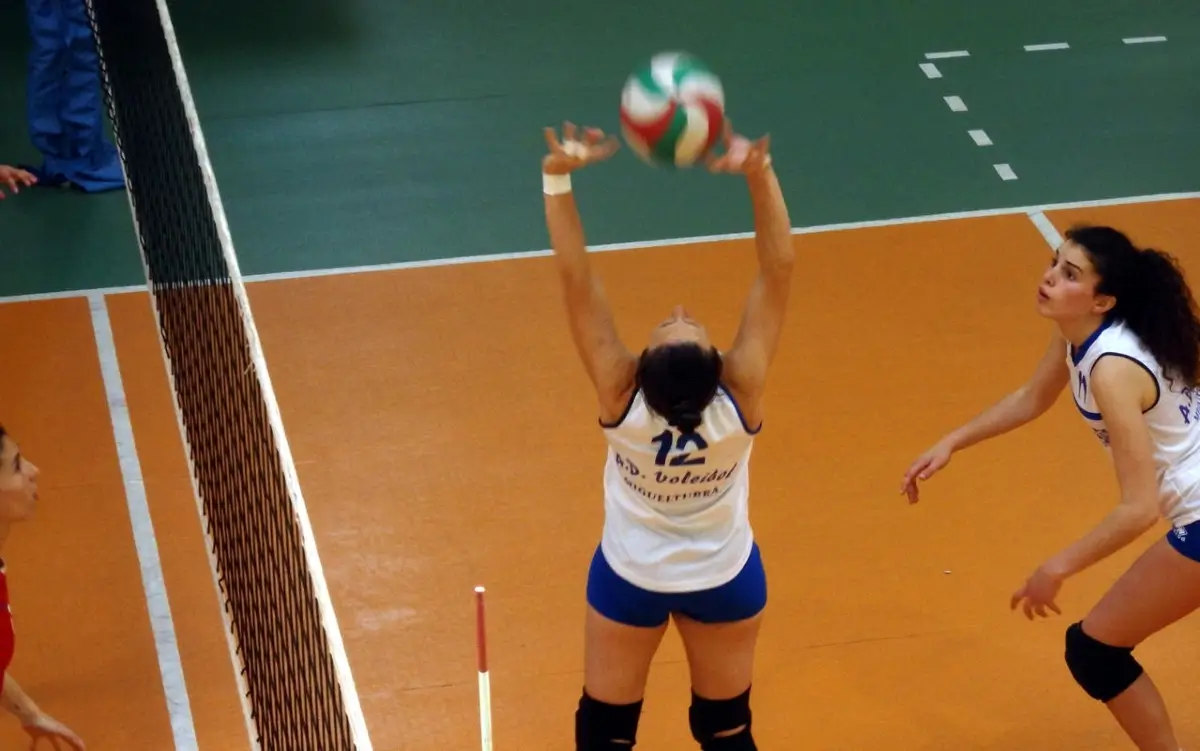Last Updated: November 29, 2023
The setter’s position in volleyball has many expectations and responsibilities. A volleyball setter orchestrates offensive plays and is expected to create scoring opportunities for their teammates. Therefore, a setter faces the dilemma of making quick decisions and ensuring precise ball placement to the hitters.
To solve this dilemma, a setter should be knowledgeable about the game, a strategic thinker, a quick decision-maker, and physically fit. That’s not all; a setter should be a good communicator who regularly seeks and gives feedback to teammates on each play.
Understanding the Dilemma Volleyball Setters Face

Setters touch more balls as compared to the rest of the players. Because of this, their role carries more weight to a team’s overall performance.
Anyone with a great understanding of setting will agree that it isn’t as easy as many people presume. In their strive for perfect ball placement, there are different dilemmas that setters face.
Precise Ball Placement
Setters should deliver the ball perfectly to their hitters while considering their hitting strategies, personal preferences and court locations. They should also properly understand their hitter’s hitting zones; some prefer higher sets, while others prefer lower ones.
Basically, the setter should place the ball properly so that the hitter doesn’t struggle to get it.
Split-Second Decision Making
Having the right mindset can influence the decision a setter takes. Even when faced with a tough team, a setter should believe in their abilities and that they will deliver outstanding results. For example, if a setter thinks a particular strategy is best, they should implement it without second thoughts.
In situations like making a dump set, the setter should make a split-second decision to play it. The setter pretends to set the ball to their team’s hitter but instead directly sends it over the net. They should ensure they place the ball precisely and aim to catch the opposing team’s defense off-guard. Proper ball placement and timing could create an opportunity to score.
Moreover, setters should adjust their setting strategies to align with their teammate’s abilities and skills. They should analyze each hitter’s potential in ball handling through different situations to determine if to set a low or high ball. Hitters with extraordinary jumping capabilities like higher sets to make powerful spikes, whereas others are okay with fast but low sets.
Adapting to the Pass
The quality of the pass a setter receives will determine their decision. In a match, a setter should expect both good and bad passes. If the pass isn’t aimed directly at the setter, they should adjust their position to get the ball. Next, they should decide whether to go for a controlled set to guarantee accuracy, a quicker set to maintain the game’s momentum or whether to adjust the play.
Analyzing the Opposing Team’s Defense
As the game develops, setters should quickly examine their opponent’s defense by identifying each player’s weaknesses or possible gaps.
For instance, if they notice a particular blocker or defender leaving a gap, they should immediately decide on the strategy to exploit. Of course, they should let their hitters know of their move so that they can act accordingly.
Making Quick Tempo Sets
Quick sets are performed closer to the net, allowing hitters to spike before the opponents form a block. Setters should use tempo sets depending on the positioning and timing of the opponent’s blockers. A slight delay will make the blockers anticipate their moves and form a solid defense.
Recommended: Setting Standards High: Setting Trends and Innovations in Volleyball this Year
Tough Game Situations
Setters encounter extra pressure in and out of the court in tough game situations like matching points or a close set. They should balance between making precise sets and still fulfill the urgency of making a score for their team. Making an error is costly, while a properly placed set can change the game’s outcome.
Therefore, the setter should be calm and trust that they are making the right decision. A tensed-up setter brings uncertainty to the rest of the team and can even place the ball poorly. They also lower the teammate’s confidence while similarly affecting their performance.
Physical Demands
A setter should understand that they won’t always face simple-to-tackle game situations and will sometimes face tough competition. Success in either situation requires physical prowess, agility and endurance.
Being physically fit enables a setter to fight through traffic, play long rallies or chase after bad passes but still ensure perfect ball placement. The setter should practice proper footwork, ball handling techniques, and do muscle strengthening exercises. Appropriate personal or team-level training will help a setter to be the best in their craft.
Reading Opponent’s Blocking Strategies
The setter should work hard to analyze their opponent’s blocking strategies, weaknesses, and strengths. If opponent players decide to change their blocks, the setter should make timely decisions and implement strategies to counter such adjustments. They can do so by changing the set’s pace, ball placement or using dumps.
Related: Have You Got the Traits of a Pro Setter?
Conclusion
Though volleyball is an entertaining sport associated with dramatic spikes and powerful saves, the setter is the pivotal player whose contribution is key.
Being this unsung hero isn’t an easy feat, as the setter must have the characteristics to maximize their abilities – to be in a better position to bring success to their team. They should deeply understand the game, teammates, and opponents to execute great playing strategies.
